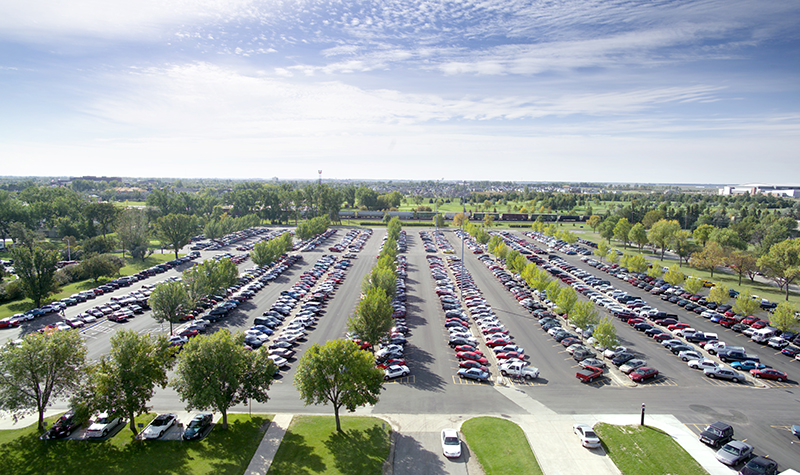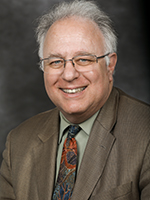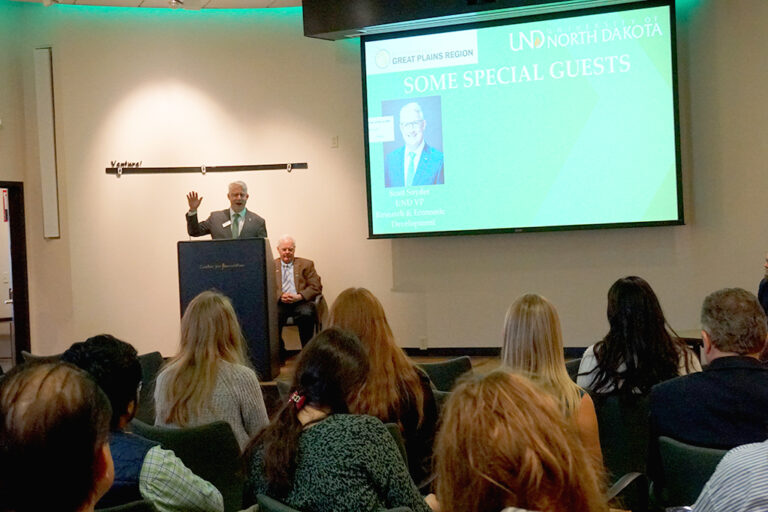Listening sessions give voice to parking concerns
Administration: survey, collaborative process to drive changes to University policies moving forward

We’re listening.
That was the message at the April 15 parking listening session, where Vice President Jed Shivers announced that no changes to UND’s parking permit system will be made until all voices are heard.
First up: a survey of the University community.
“We want to find a consensus-driven solution,” said Shivers, vice president for finance & operations and COO. “We want to find a good solution and create a process of participation that lasts.”
This was the second of two listening sessions, which were organized to gather input from students, faculty and staff regarding UND parking. The goal is to ensure that there is community-wide participation as we work toward a solution.
Process of participation
Shivers said he recognizes the need to be more transparent and collaborative, and that no changes on parking will take place until next year.

He introduced Carrie Herrig, staff career & personal advancement coordinator with the Teaching Transformation and Development Academy (TTaDA), who said the process of developing a new parking policy will begin with a survey of all members of the University community.
“What do we value?” asked Herrig. “Cost? Convenience? Supply? Fairness? We will build a framework of what parking should look like.”
Herrig said the new process will be modeled after world café style conversations, which introduce high-level, mind-stretching questions.
Parking-related policy changes will follow a similar process used to make changes to the Student Code of Conduct.
Once the parking framework has been developed, it would be sent to a new group, the Parking and Transportation Review Committee, whose members will be elected from across campus. The group will focus on parking and its impacts on students, faculty, staff and visitors, with a charge to develop a new parking policy. The draft policy would then go to University governance, including Student, Staff and University Senates, for comment.
From there, the proposal would go to the policy advisory group for review, then be disseminated to campus for a two-week comment period. The final version will go to the Executive Council and then the president for approval.
“This is new for parking,” Herrig said, adding that the world café approach is being used to engage University and Staff Senates, Student Government and the Parking & Transportation Review Committee.
Q&A
Shivers, along with Mike Pieper, associate vice president for facilities, answered questions from the audience, which are summarized below.
- UND will continue to rebalance parking spaces by removing some parking spots that are in low-demand areas, said Pieper. “We average 8,000 cars on campus and have 11,300 spaces. We are trying to build parking in high-demand areas and take low-demand areas offline.” He added that there are plans to reduce the Gustafson parking lot to 40 spots from 80 but build new lots on the former Chandler Hall site and the Steam Plant after it is demolished.
- There are no plans to build another ramp or parking structure.
- It could be feasible to, in part, charge for parking permits based on income. “It’s on the table,” Shivers said. “We hope you’ll participate in the discussions.”
- All revenue generated by parking goes to the parking budget.
- Grand Forks City Transit may take over shuttle bus routes on campus if they can do it more economically and provide good service.
- There will be no changes to airport parking for aviation students without input from them.
- Demand for parking has been measured by two consultants who compared UND to like institutions, as well as physical counting of cars

Mike Pieper in parking lots.
- Affiliates who park on campus, such as Core Technology Services, the North Dakota Museum of Art and others will also be included in parking planning.
- Parking for people with disabilities will also be examined with direct involvement by the Office of Equal Opportunity.
- Each parking permit will continue, for now, to have a limit of three vehicles on the permit.
- Open parking after 4 p.m. will continue at no charge.
- Increasing parking costs to programs that host events and visitors can harm those programs, said a faculty member. “It impacts our ability to do programming and is detrimental to our reputation.” She added that when she receives grants for events, there is a facilities and administrative (F&A) fee added, but she still has to cover visitor parking. “This year we were initially quoted $1,400 for 100 spaces,” she said. “I could bring in another guest speaker for that.” Shivers said that’s a legitimate comment. “What we want to do as a University community is bring people to campus and make it more urban and attractive. We want to make sure that happens.”
- Pieper said they would look at snow removal to ensure parking spots are available.
- One audience member spoke about the possibility of a “tiered” parking policy that would have people park further away at reduced cost. He said it would make it difficult to pick up children in emergencies or for appointments, and asked if winter temperatures had been taken into account. “Why are we compared to the University of Minnesota?” he asked. “We are not the same campus or city.” Shivers said they will do what’s right for UND. “The purpose is to find what works here, but we can also learn from how other similar universities in smaller college towns have approached this problem,” he said.
- The debt on the parking ramp is $1.1 million. Parking spent $5 million last summer to renovate dilapidated lots, and to renovate all lots would cost about $30 million.
The meeting ended with one last comment from an audience member who thanked Shivers and Pieper for listening to them.
“Thank you for coming,” Shivers responded. “I’m looking forward to establishing the new parking policy, working with you and continuing to hear from you as we develop a path that works.”


